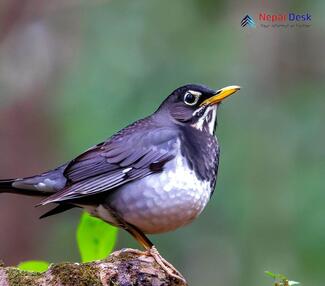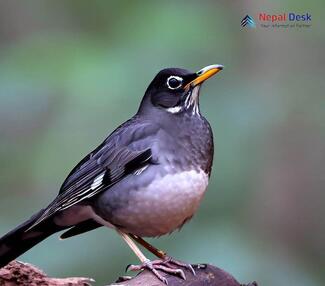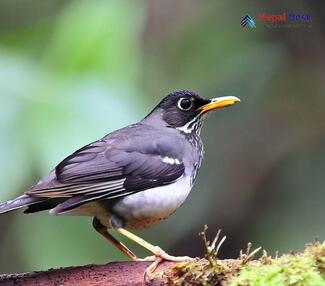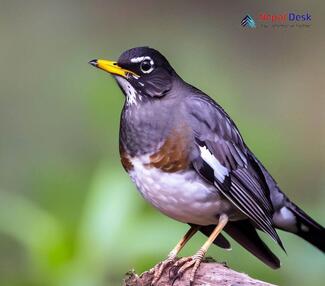The Black-throated Thrush (Turdus atrogularis) is a fascinating species of bird that has captured the attention of birdwatchers and nature enthusiasts alike. Native to parts of Asia, including Nepal, the Black-throated Thrush is known for its striking appearance and melodious song. In this profile, we'll explore the unique characteristics of this beautiful bird and its presence in the picturesque landscapes of Nepal.
Distinctive Features and Habitats
The Black-throated Thrush is best known for its remarkable appearance. Males showcase a black throat, upper breast, and face contrasting sharply with their greyish upper parts and reddish-brown lower breast and flanks. Females exhibit a more subdued coloration, featuring a brownish throat and greyer overall plumage. The bird's size ranges between 23-27 cm (9-11 inches) in length, making it a conspicuous sight amidst the far more familiar thrush species.
The natural habitat of Turdus atrogularis spans various Asian regions such as Russia, China, Kazakhstan, and Mongolia. In Nepal specifically, these birds prefer higher elevations in winter (around 2300m to 3500m), mostly frequenting forests abundant with rhododendron and oak trees. However, they often descend to lower altitudes during summer.
Breeding and Feeding Habits
The breeding season for the Black-throated Thrush usually spans from May to July – during which time they nest primarily in tall trees or on rocky ledges. They typically lay 4-6 eggs that are eventually incubated by both parents before hatching after around two weeks.
An omnivorous species, Turdus atrogularis enjoys consuming a diet comprised of both insects and fruits. Human habitation areas, agricultural lands, and fruit plantations are excellent sources of food, attracting these birds in search of much-needed sustenance.
Conservation Efforts in Nepal
Nepal is dedicated to preserving its rich biodiversity, and the Black-throated Thrush is no exception. Several protected wildlife reserves and national parks throughout the country offer safe habitats for these birds. Birdwatchers and nature enthusiasts often flock to popular destinations like Annapurna and Langtang National Parks for birding excursions, ensuring that conservation efforts are actively supported through ecotourism.
Final Thoughts
The Black-throated Thrush (Turdus atrogularis) provides a fascinating glimpse into the diverse avian world found in Nepal and surrounding regions. With its striking appearance, captivating song, and intricate habitat preferences, this bird continues to pique the curiosity of those intrigued by nature's most beautiful creations. By appreciating and preserving these unique creatures, we further our understanding of our planet's rich biodiversity and natural wonders.




